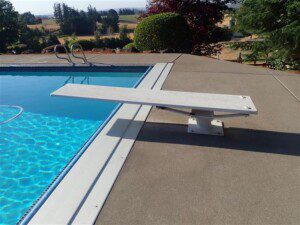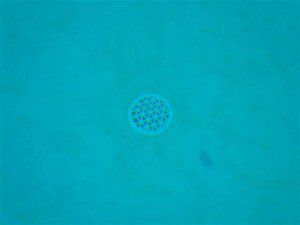Swimming pools can be a luxurious addition to a home. However, specific precautions should be in place in order to maximize safety for persons in and around the pool.

Next, there are many recommendations for the barrier system around an outdoor pool to help prevent unwanted entry into the pool area. The pool barrier system should be a minimum of 48 inches tall and none of the openings in the barrier system should allow the passage of a 4-inch sphere. The barrier system should go around the circumference of the pool and should not be climbable. Additionally, if the barrier system is made of chain-link, it should not have openings that exceed 1 ¼”.
Third, regulations are established for gates that open to the pool area. To help prevent unwanted entry to the pool, the pool access gates should be self-closing and self-latching and should solely swing away from the pool. If the self-latching device is located less than 54 inches from the bottom of the gate, the release mechanism should be located on the pool side of the gate, and the gate and barrier should have no opening greater than ½-inch located within 18 inches of the release mechanism. Access gates should also be equipped to allow for a locking device.
Additionally, swimming pools that are at least five feet deep in the deepest portion of the pool should be equipped with a ladder and handrail system to aid in pool egress.

Finally, diving boards are considered to be one of the most dangerous additions to a swimming pool. Most residential swimming pools are not deep enough to allow for safe diving. The majority of jurisdictions require the pool depth to be a minimum of 8 or 9 feet if a diving board is installed. According to the National Spinal Cord Injury Statistics Center, diving was the leading cause of sports and recreation related spinal injuries between 2010 and 2017. We recommend checking with a qualified local swimming pool contractor to determine if your pool is of adequate size to allow for safe diving.
In conclusion, ensuring that safety precautions are in place or knowing what corrections need to be made can allow for peace of mind when considering buying a home with a pool. If you would like a swimming pool inspection in the Portland / Vancouver metropolitan area, schedule an inspection today! Happy swimming!
